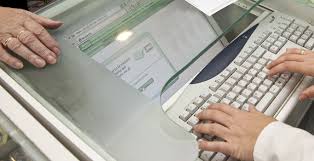The electronic prescription, a tool in the health area, is simpler, faster and safer.
Technological developments at the service of the health system have benefited hundreds of thousands of patients, also promoting quality of life.
The electronic prescription related to telemedicine and telepharmacy now also becomes part of Artificial Intelligence (AI), which helps doctors diagnose, prescribe and provide medication to chronic or long-term patients in their place of residence.
Little by little, artificial intelligence is becoming established in different processes of daily life and in the case of health, it will allow the successful development of more effective and safer drugs.
Likewise, the use of the digital tool such as the electronic prescription allows the health professional to issue prescriptions that are dispensed from any pharmacy, without the need to present the prescription on paper.
Likewise, laws have been issued to regulate the process of issuing electronic prescriptions, therefore, in countries where they have this prescription method, each country has its own regulations for the digital prescription of medications.
For example: In Argentina, electronic prescriptions are regulated by Law and it is established that they must be unique, unalterable and secure. In Colombia, the electronic prescription system known as MIPRES was implemented in 2016.
The idea of these electronic recipes is that in the short term, they can be used with codes that facilitate their use. Likewise, the electronic record will be an effective tool to streamline health management.
Electronic prescribing allows your prescribers to send their prescriptions directly to your pharmacy. Allowing you to save money and time, and maintain security. You don’t have to leave your prescription and wait for your pharmacist to fill it.
The process of obtaining a prescription begins at the doctor’s office or at the clinic or health center where you go. If you are taking any medication, even if it is sold without a prescription, such as vitamins or a medicine made from medicinal plants, tell your doctor.
The responsibility for the proper prescribing and dispensing of controlled substances rests with the prescribing physician, but a corresponding responsibility rests with the pharmacist who fills the prescription.
As we know, a normal prescription contains the following data?
Name, ID, age, date, signature, medical record number, and wet stamp of the doctor, address and telephone number of the prescriber. Enter the title and professional registration number of the prescriber. Handwritten signature of the doctor (handwritten). Likewise, you must bring medical instructions in order to verify the quantities of medications required for the complete treatment.
How does the electronic prescription work?
The doctor prescribes the medication through a computer program and gives you a treatment sheet (with the name of the medication, the dose and the duration of the treatment).
At the Pharmacy, with your health card, they access the prescription through the computer and give you the medication. The medical prescription may be headed by the abbreviation “Rp” or “Rp/”, récipe (dispense or take), currently it is usually headed with “Dp/” or “DPS” (“dispense”).
It usually consists of two parts: The body of the prescription, intended for the pharmacist.
How many medications can be prescribed per prescription?
A single medication, with the exceptions provided. In some cases, for example: psychotropics such as diazepam (Valium), lorazepam or amitriptyline. The medical prescription may be filled up to three times and is retained on the last occasion it is filled.
What are the names of the controlled medications in the electronic prescription?
Phenobarbital, Hydromorphone, Meperidine, Methadone, Morphine and Primidone.
Currently, there are basically five ways of dispensing medicines: direct sale (without a medical prescription), simple medical prescription, compounded medical prescription, withheld medical prescription and check prescription.
According to experts, to avoid errors of this type it is vital to ensure what is known in medicine as the five correct ones: correct medication, correct patient, correct time, correct dose and correct preparation.
Additionally, the expiration time of a medical order will be valid for 360 days.
These are the benefits of using the electronic prescription:
- Reduces the volume of errors.
- Simplifies the prescription process.
- Improves the experience and increases patient satisfaction.
- It allows improving the statistics of patients’ medication history.
These would be the essential requirements for an electronic prescription:
- Identification
- Informative content
- Validity
- Integrity and unalterability
- Security and confidentiality
- Interoperability
FONT
https://conexia.com/es/receta-electronica/
https://www.docline.com/blog/7-avances-tecnologicos-cambiar-medicina/
https://nexuphealth.com/requisitos-recetas-electronicas-digitales/








